Home Decor
The Pros and Challenges of Integrating Green Roofs and Living Walls in Home Design
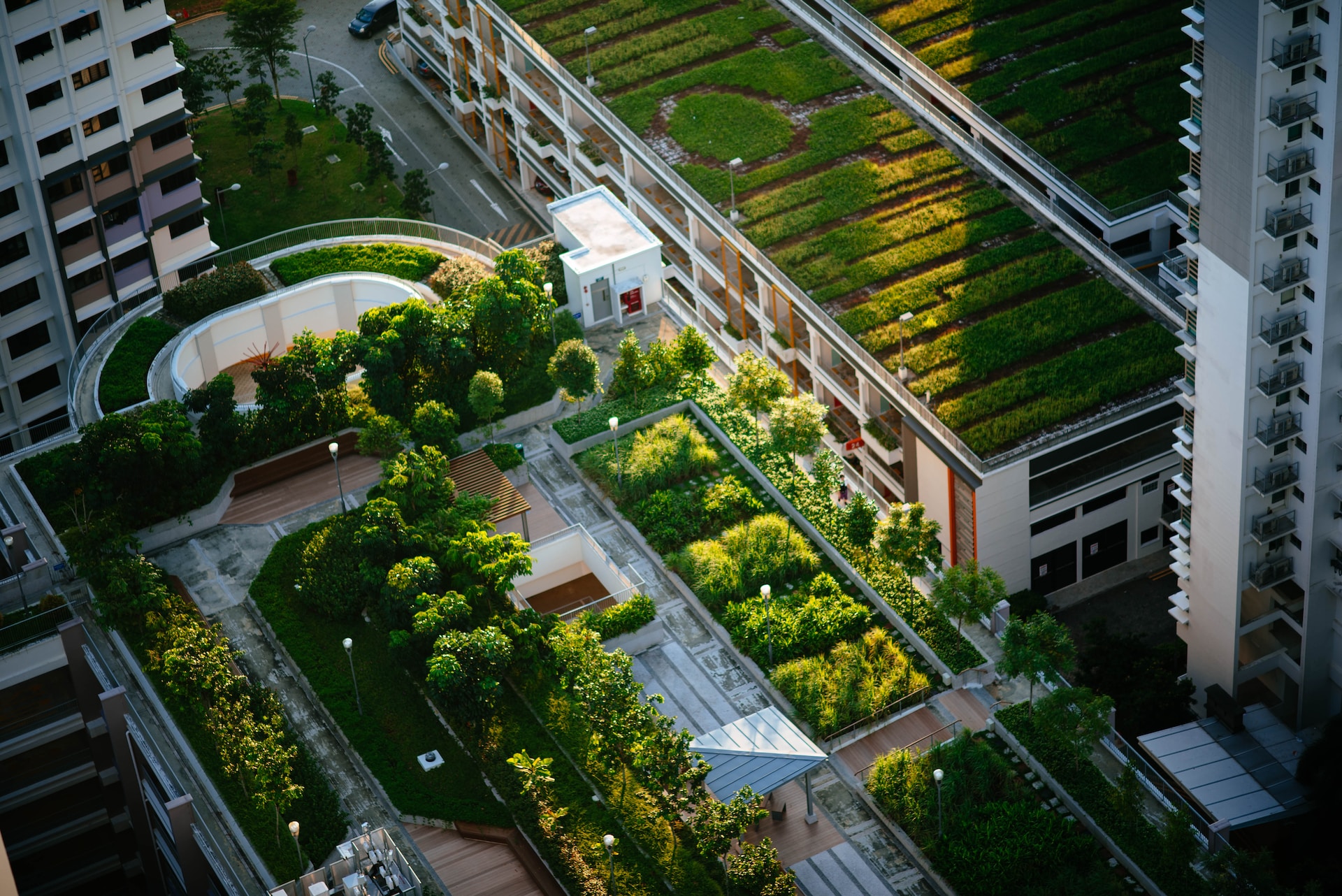
The architectural landscape is witnessing a paradigm shift as sustainable practices gain prominence, steering us toward a future where our homes coexist harmoniously with nature. Green roofs and living walls stand at the forefront of this movement, seamlessly integrating the vivacity of nature into the fabric of urban dwellings. They are not just design elements; they are living, breathing entities that contribute to the ecological and aesthetic richness of our living spaces.
This integration, however, is nuanced, presenting a tapestry of benefits that enhance the quality of life, alongside a spectrum of challenges that demand careful consideration. As we know the intricate world of green roofs and living walls, we explore how they redefine the concept of home, transforming spaces to be more resilient, sustainable, and attuned to nature’s rhythm.
Benefits of Integrating Green Roofs and Living Walls in Home Design

1. Improved Air Quality
Green roofs and living walls serve as vital components in the quest for cleaner urban air, functioning as natural filtration systems. By absorbing pollutants and particulates, these living structures significantly enhance the quality of the surrounding air. The dense foliage and varied plant life capture dust, reduce smog, and emit life-sustaining oxygen, creating microclimates of improved air quality.
This is particularly crucial in bustling urban environments where vehicle emissions and industrial activities contribute to pollution. Beyond the immediate environmental benefits, this improvement in air quality can translate to better respiratory health for the inhabitants, fostering a safer and more health-conscious urban living space.
2. Urban Heat Island Mitigation
Urban areas are notorious for their elevated temperatures compared to their rural counterparts, a phenomenon known as the urban heat island effect. Green roofs and living walls directly counteract this by replacing heat-retentive concrete and asphalt with plants, which through the process of evapotranspiration, release moisture and cool the air.
This natural air-conditioning effect not only makes urban spaces more comfortable but also contributes to the mitigation of heat-related illnesses and energy consumption. By curbing the demand for air conditioning, these green installations play a pivotal role in reducing greenhouse gas emissions and aligning urban development with sustainable practices.
3. Energy Efficiency
Integrating green roofs and living walls into building design is a strategic move toward energy conservation. These living structures provide natural insulation, stabilizing indoor temperatures throughout the year. In the winter months, they add an additional layer of insulation, reducing the need for artificial heating.
Conversely, during the hotter seasons, they shield the building from direct sunlight, minimizing the reliance on air conditioning. This not only results in substantial energy savings but also contributes to the longevity of HVAC systems due to reduced usage. In the long run, the energy efficiency facilitated by green roofs and living walls translates to financial savings and a smaller carbon footprint, marking a significant stride towards sustainable living.
4. Biodiversity Enhancement
Green roofs and living walls act as bustling hubs of life amidst the concrete expanse of urban environments, playing a crucial role in enhancing urban biodiversity. These verdant installations provide much-needed refuge for a plethora of organisms including birds, insects, and small mammals, which are otherwise scarce in city settings.
The diverse range of plants offers various habitats and food sources, fostering a resilient ecosystem. This increase in biodiversity not only contributes to the ecological health of urban areas but also enhances the connectivity between green spaces, facilitating wildlife movement and creating a more vibrant, life-supporting cityscape.
5. Stormwater Management
In addressing the pressing issue of urban flooding, green roofs, and living walls emerge as innovative solutions for stormwater management. By absorbing and retaining rainwater, these green installations significantly reduce surface runoff, alleviating pressure on urban drainage systems. The substrate and plants act as a natural sponge, capturing rainwater and releasing it gradually, thereby mitigating the risk of flooding and erosion.
This natural water management system also contributes to water quality improvement as the plants and soil filter out pollutants. In embracing these living structures, urban areas can transform their approach to water management, promoting resilience and sustainability.
6. Aesthetic Improvement
Green roofs and living walls introduce a unique aesthetic dimension to the urban architectural landscape, blending functionality with beauty. These living canvases add vibrant colors, textures, and patterns to buildings, transforming mundane facades into visual spectacles. The aesthetic enhancement is not merely superficial; it has profound implications on the perceived value of properties, making them more attractive to buyers, renters, and investors.
Beyond the economic aspect, the visual appeal of green installations contributes to the overall quality of urban life, creating spaces that are not just livable but also delightful. In this way, green roofs and living walls stand as tangible expressions of a city’s commitment to beauty, innovation, and sustainability.
Challenges of Integrating Green Roofs and Living Walls

1. Limited Access to Repairs
In the UK, the integration of green roofs and living walls into buildings presents a unique challenge when it comes to conducting repairs and maintenance. The lush foliage and intricate installation systems can restrict access to certain parts of the building, making routine checks and urgent repairs more complex.
This is especially pertinent for older buildings or those with unique architectural features, which are prevalent in the UK’s historic urban landscape. Addressing this issue requires foresight in the design phase, ensuring that access points are integrated into the installation, and maintenance plans are robust enough to prevent any long-term issues. This proactive approach safeguards the building’s structural integrity while maintaining the aesthetic and ecological benefits of the green installations.
2. Uncertainty About Long-Term Performance
While green roofs and living walls have gained popularity in the UK for their immediate environmental and aesthetic benefits, there is still a degree of uncertainty regarding their long-term performance and durability. Questions linger about how these living structures will fare over decades, particularly in the face of the UK’s variable weather patterns and potential climate change impacts.
Ongoing research and monitoring are crucial to addressing these uncertainties, providing valuable data that can inform future design, installation, and maintenance practices. By committing to a long-term view and investing in continuous learning, the UK can ensure that green roofs and living walls remain viable and beneficial components of its urban landscape for years to come.
3. Potential for Water Damage
Green roofs and living walls in the UK must be meticulously installed and maintained to prevent water damage to the underlying building structure. The country’s propensity for rain heightens the risk of poor water management within these installations, potentially leading to leaks and structural damage.
Ensuring proper waterproofing, drainage, and regular maintenance checks are crucial steps in mitigating this risk. When executed correctly, green installations can indeed protect and prolong the life of building structures. However, this necessitates a stringent adherence to best practices and ongoing vigilance to ensure that any potential issues are promptly addressed.
4. Need for Specialized Knowledge
The successful integration of green roofs and living walls into the UK’s urban fabric demands specialized knowledge and expertise. From the initial design phase through to installation and ongoing maintenance, these living structures require a depth of understanding that goes beyond traditional landscaping or architecture.
In the UK, this necessitates a pool of skilled professionals who are well-versed in the specific challenges and requirements of green installations in the region’s unique climate and architectural context. Investing in education and training, and fostering a community of experts, is paramount to ensuring that green roofs and living walls are designed, installed, and maintained to the highest standard, unlocking their full potential in enhancing urban environments.
5. Structural Requirements
In the UK, adapting buildings to accommodate green roofs and living walls necessitates careful consideration of structural integrity. The added weight of soil, plants, and accumulated water can pose a significant load, especially on older or historically significant structures that are commonplace across the country. Ensuring that a building can safely support this additional weight is paramount, requiring thorough assessment and potentially structural reinforcement.
This step is not just during the installation but throughout the lifecycle of the green installation, as the integrity of the structure must be maintained to ensure safety and functionality. Addressing these structural requirements underscores the importance of rigorous planning and engineering expertise in integrating green roofs and living walls into the UK’s diverse architectural landscape.
6. High Initial Costs
Investing in green roofs and living walls is a commendable step towards sustainable urban living in the UK. However, it comes with significant initial costs. The expense of purchasing the necessary materials, coupled with the cost of professional design and installation services, can make these eco-friendly options less accessible.
This financial barrier is particularly evident when retrofitting existing buildings, where additional structural adjustments may be necessary. Despite the long-term economic and environmental benefits that green installations offer, addressing the upfront costs remains a challenge, necessitating innovative funding solutions and incentives to encourage wider adoption across various sectors in the UK.
7. Maintenance Demands
The lush façade of green roofs and living walls in the UK’s urban spaces belies the extensive maintenance they require to thrive. Regular tasks such as watering, pruning, and replanting are crucial to sustaining the vitality of the installations and ensuring they continue to provide environmental and aesthetic benefits. The variable UK climate, with its periods of heavy rainfall and potential for frost, adds an additional layer of complexity to maintenance routines.
Building owners and managers must be prepared to invest in ongoing care, facilitated by skilled horticulturists, to preserve the functionality and appearance of green roofs and living walls. This commitment to maintenance is essential to maximizing the lifespan and efficacy of these green installations.
8. Waterproofing and Drainage Concerns
Incorporating green roofs and living walls into buildings in the UK necessitates meticulous attention to waterproofing and drainage systems. Given the region’s propensity for rain, inadequate waterproofing can lead to leaks, while poor drainage may result in water accumulation, potentially causing structural damage and diminishing the installation’s lifespan.
Ensuring that these systems are expertly designed and flawlessly implemented is critical to prevent water damage and guarantee the long-term success of the green installation. This challenge underscores the importance of investing in quality materials and skilled professionals, as well as conducting regular inspections and maintenance to address any potential issues proactively. Through diligent planning and care, the risk of water-related complications can be mitigated, ensuring that green roofs and living walls remain a viable and valuable addition to the UK’s urban architecture.
9. Potential for Pest Issues
Integrating green roofs and living walls in urban spaces introduces a lush, verdant aspect to the architecture, but it also brings with it the potential for pest issues. These green installations provide habitats not just for beneficial insects and birds, but also for pests that can harm the plants or become a nuisance for building occupants.
In the UK, where urban wildlife is diverse, managing these pest issues becomes a critical aspect of maintaining the health and aesthetics of green installations. Building owners and maintenance teams must be proactive, implementing integrated pest management strategies that are effective yet environmentally sensitive, ensuring that the green spaces remain vibrant and beneficial.
10. Limited Plant Selection
The success of green roofs and living walls in the UK hinges significantly on plant selection. However, this choice is often constrained by the specific conditions of the site, including climate, exposure to sunlight, and structural limitations. While this limitation challenges designers and horticulturists, it also encourages innovation and a deepened understanding of local flora.
The goal is to identify and propagate plant species that not only thrive in the given conditions but also contribute to biodiversity and the aesthetic appeal of the installation. This challenge, therefore, becomes an opportunity to delve into the rich tapestry of UK plant life, promoting native and adaptable species that enhance the urban green space.
11. Risk of Plant Failure
Green roofs and living walls are living structures, and like all living things, plants require care and attention. In the UK, with its varied climate and urban pressures, the risk of plant failure is a significant challenge.
Without proper maintenance, including adequate watering, nutrient management, and protection from extreme weather, plants may die off, diminishing the effectiveness and aesthetic appeal of the installation. Addressing this challenge necessitates a commitment to ongoing care and the development of robust maintenance plans, ensuring that the green installations remain vibrant and functional throughout their lifespan.
12. Complexity of Irrigation
Establishing an efficient irrigation system is crucial for the success of green roofs and living walls, yet it presents a complex challenge. In the UK, where rainfall can be abundant but also unpredictable, designing an irrigation system that ensures consistent and adequate water supply without overwatering or wasting resources requires precision and expertise.
The cost associated with installing and maintaining such a system adds another layer of complexity to the equation. Nonetheless, investing in a well-designed irrigation system is a critical step in ensuring the long-term viability and success of green installations, making them a sustainable feature of the urban landscape.
13. Seasonal Variation
In the UK, where the seasons distinctly transform the landscape, green roofs, and living walls are not exempt from these changes. The lushness and vibrancy seen during spring and summer can give way to a more subdued appearance in autumn and winter. This seasonal variation affects not just the aesthetics but also the ecological benefits of the installations.
During the colder months, the reduced plant activity can lead to a decrease in air purification and insulation properties. Addressing this challenge requires a strategic selection of plant species that offer year-round interest and benefits, as well as a robust maintenance plan that adapts to the changing seasons, ensuring the green installations continue to contribute positively to the urban environment throughout the year.
Conclusion
Green roofs and living walls are like giving our buildings a patch of nature. In the UK, this is not just about making things look nice, but it’s also about making our cities cooler, cleaner, and better for birds and bees. The road to making our buildings green is a bit bumpy – with old buildings needing extra care, our rainy and windy weather, and the need to keep the plants happy. But, if we keep learning and working together, these green patches can become a normal and amazing part of our UK cities, making them better for everyone.
FAQs
Incorporating green roofs and living walls brings numerous advantages to home design, ranging from environmental to economic. These living installations enhance air quality, reduce urban heat islands, contribute to energy efficiency, foster biodiversity, and manage stormwater effectively. They also elevate the aesthetic appeal of buildings, creating lush, green spaces in urban environments. These benefits collectively contribute to a healthier, more sustainable living space.
Green roofs and living walls act as natural air purifiers, capturing pollutants and releasing fresh oxygen. The plants and soil in these installations filter particulate matter, helping to reduce smog and contributing to cleaner air. This is particularly beneficial in urban areas where air quality is often compromised due to traffic and industrial activities.
By providing natural insulation, green roofs and living walls help to maintain stable indoor temperatures, reducing the need for heating in winter and cooling in summer. This results in significant energy savings and lower utility bills, making these installations a cost-effective choice in the long run.
These green installations play a crucial role in mitigating urban heat islands by absorbing sunlight, providing shade, and cooling the air through the process of evapotranspiration. This helps to lower ambient temperatures in urban areas, creating a more comfortable and healthier living environment.
Green roofs and living walls provide habitats for a variety of birds, insects, and small mammals, thereby enhancing urban biodiversity. This influx of wildlife contributes to the ecological balance of urban areas, promoting resilience and sustainability.
Yes, these installations have excellent stormwater management capabilities. Green roofs absorb rainwater, reducing runoff and lowering the risk of flooding. Living walls also contribute to this process, helping to manage stormwater at the source and mitigating the pressure on urban drainage systems.
The performance and appearance of green installations can vary with the seasons, with potential fluctuations in their insulating capabilities, stormwater management effectiveness, and aesthetic appeal. Adequate plant selection and maintenance are crucial to ensuring year-round performance.
Beyond their functional benefits, green roofs and living walls add immense aesthetic value to buildings. They transform dull, grey surfaces into vibrant, living landscapes, enhancing the visual appeal of the property and contributing to a more pleasant urban environment.
Ensuring that plants receive the right amount of water is challenging, requiring a well-designed irrigation system and regular maintenance. This is crucial for the health of the plants and the overall effectiveness of the installation.
While the benefits are substantial, integrating green roofs and living walls also presents challenges. These include potential plant failure, complex irrigation needs, seasonal variations in appearance and performance, difficulties in accessing the building for repairs, uncertainties about long-term performance, risks of water damage, and the need for specialized knowledge for design, installation, and maintenance.
While site-specific conditions can influence plant selection, a diverse and resilient plant palette can be achieved through research and thoughtful design, ensuring the success of the installation.
These installations can provide habitats for pests, but with proper plant selection and maintenance, these risks can be minimized, ensuring the installations remain a healthy and functional part of the urban environment.
Yes, plant failure is a risk, particularly if the installations are not properly maintained or if unsuitable plant species are selected. This can lead to reduced effectiveness in terms of environmental benefits and a decline in aesthetic appeal.
Maintenance demands can be high, requiring regular watering, pruning, and plant care. However, with the right design and plant selection, these tasks can be managed efficiently, ensuring the long-term success of the installation.
Without proper installation and maintenance, there is a risk of water damage. Ensuring adequate waterproofing and drainage is crucial to prevent such issues and protect the building’s integrity.
As relatively recent additions to urban environments, there is ongoing research to understand their long-term performance. However, many existing installations have already demonstrated their durability and effectiveness over time.
They can make access for repairs and maintenance more challenging, necessitating careful design and planning to ensure that all areas of the building remain accessible.
The upfront costs can be significant, but the long-term benefits in terms of energy savings, stormwater management, and increased property value can provide a substantial return on investment.
The additional weight of soil, plants, and water on green roofs necessitates thorough structural assessments and potential reinforcements to buildings, ensuring they can safely support the installation.
Yes, designing, installing, and maintaining these installations requires expertise in horticulture, architecture, and engineering. This ensures that they are properly integrated into buildings and can function effectively over the long term.

Home Decor
How to Choose Strata Painting Services in London
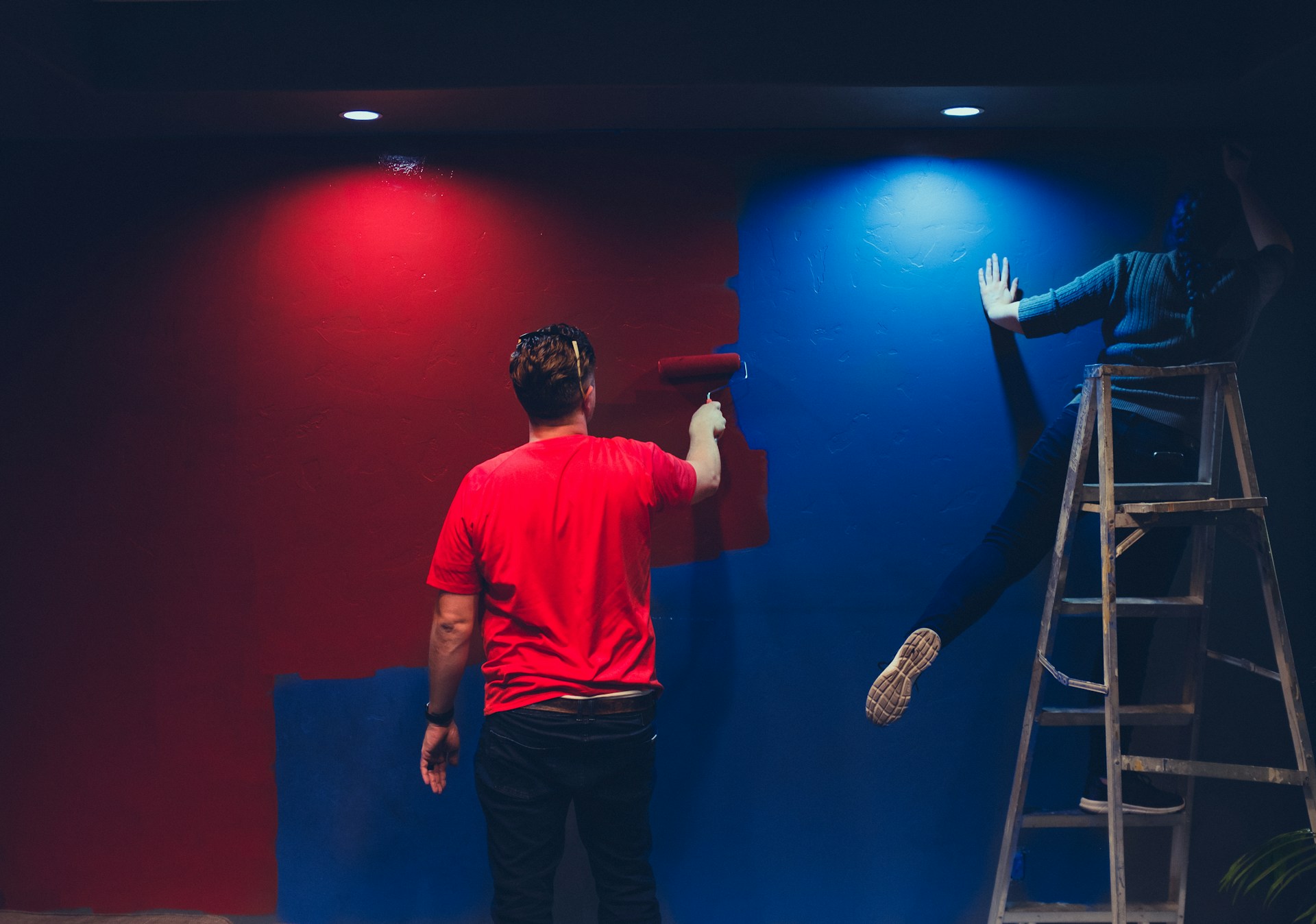
London is home to countless high-rise apartments, office complexes, and historic buildings, all requiring regular upkeep to maintain their charm and durability. One crucial aspect of property maintenance is strata painting, which ensures interior and exterior shared spaces remain visually appealing and well-protected.
Unlike standard painting jobs, strata painting involves special coatings, weatherproofing, and compliance with strict safety regulations to meet the needs of multi-unit buildings.
With London’s frequent rainfall, pollution, and varying architectural styles, choosing a reliable strata painting service isn’t just about aesthetics—it’s about long-term protection and value preservation.
Whether it’s a modern glass-covered skyscraper in Canary Wharf or a centuries-old residential complex in Kensington, the right painting professionals can help enhance curb appeal while ensuring structural integrity.
What Does Mean By Strata Painting?

Strata Painting is a specialized painting service designed for multi-unit properties like apartment buildings, townhouses, and commercial complexes. It ensures that shared areas such as hallways, staircases, lobbies, and exteriors are well-maintained and protected against weather damage.
For instance, in central London, high-rise buildings often require weatherproof coatings to withstand frequent rain and pollution. In contrast, heritage buildings in Westminster may need specialized paints to preserve their original look while complying with heritage protection laws. This makes strata painting essential for maintaining property aesthetics, longevity, and value.
Key Factors of Choosing Strata Painting Services in London

1. Use of Drones for Building Inspections Before Painting
Drones have revolutionized building inspections by providing aerial views of high-rise strata properties, allowing for detailed assessments of structural damage, peeling paint, and moisture penetration. This reduces the need for scaffolding-based manual inspections, cutting costs and improving safety. According to a 2023 study, over 40% of London’s property management firms have integrated drone inspections for maintenance planning, proving its growing popularity in the industry.
2. Use of Biodegradable and Non-Toxic Paints
With stricter UK environmental regulations, London-based strata painting companies are shifting towards biodegradable, non-toxic, and low-VOC (Volatile Organic Compound) paints. These eco-friendly options improve indoor air quality while minimizing harmful chemical emissions. Reports indicate that over 60% of newly developed residential buildings in London now use low-VOC paints to meet sustainability standards.
3. Green Certifications for Environmentally Responsible Contractors
Many strata painting contractors in London seek BREEAM (Building Research Establishment Environmental Assessment Method) and LEED (Leadership in Energy and Environmental Design) certifications to showcase their commitment to sustainability. Buildings with BREEAM-certified painting solutions have been shown to reduce energy consumption by up to 25% annually, making them an attractive option for property developers and management companies.
4. Self-Cleaning and Heat-Reflective Coatings
With London’s variable climate, self-cleaning coatings have gained traction due to their ability to reduce dirt accumulation and grime buildup on painted surfaces. These coatings, often made with titanium dioxide-based formulas, break down organic dirt through photocatalysis. Similarly, heat-reflective coatings help reduce indoor cooling costs in London’s commercial buildings by reflecting UV rays. Studies indicate that heat-reflective paints can lower interior temperatures by up to 5°C, cutting energy expenses by 15-20% annually.
5. 3D Visualization Tools for Previewing Color Schemes
Choosing the right color scheme is a crucial decision in strata painting. 3D visualization tools allow property owners, managers, and residents to preview multiple color options and finish in real-time before painting begins. These tools, widely used by top painting contractors in London, help reduce color mismatches, improve client satisfaction, and streamline the decision-making process.
6. Automated Painting Equipment
Automation is transforming the strata painting industry by improving efficiency, safety, and consistency. High-rise buildings in London are increasingly adopting robotic painting systems that use precision-controlled spray mechanisms to coat large surfaces evenly. These systems reduce labor costs by up to 30% and enhance safety by minimizing human exposure to hazardous heights and harsh weather conditions.
7. Integration of Solar-Reflective Coatings to Reduce Energy Consumption
Solar-reflective coatings are gaining popularity in London’s high-rise and commercial strata projects. These coatings are designed to reflect UV radiation, preventing excessive heat absorption and reducing the reliance on air conditioning. Studies suggest that buildings treated with solar-reflective coatings can cut cooling costs by up to 20%, particularly in densely populated areas like Canary Wharf and Central London.
8. Smart Coatings with Antimicrobial Properties
Post-pandemic hygiene concerns have led to the widespread adoption of antimicrobial coatings in London’s residential and commercial strata properties. These advanced coatings inhibit bacterial and mold growth, making hallways, lobbies, and shared areas more hygienic. Popular in hospitals and commercial offices, these coatings are now being used in luxury residential complexes to improve indoor air quality and overall sanitation.
9. Water-Based Paints Instead of Oil-Based Solutions
Switching to water-based paints has significantly reduced pollution and carbon footprints in London’s painting industry. These paints dry faster, emit fewer chemicals, and are easier to clean up, making them a preferred choice for strata projects aiming to comply with environmental regulations. Data from the UK Green Building Council (UKGBC) indicates that over 70% of professional painting projects in London now use water-based coatings, marking a shift towards greener practices.
10. Recycling and Waste Reduction Initiatives
Many strata painting contractors now offer paint can recycling programs and waste reduction initiatives. Several London-based firms partner with recycling facilities to repurpose leftover paint, reducing landfill waste and promoting sustainability. This trend aligns with the UK government’s 2030 sustainability goals, pushing more companies to embrace eco-conscious disposal practices.
11. Automated Painting Equipment
Automation is transforming the strata painting industry by improving efficiency, safety, and consistency. High-rise buildings in London are increasingly adopting robotic painting systems that use precision-controlled spray mechanisms to coat large surfaces evenly. These systems reduce labor costs by up to 30% and enhance safety by minimizing human exposure to hazardous heights and harsh weather conditions.
Common Challenges for Strata Painters in London
- Weather conditions: London’s high humidity and frequent rain require special coatings. Unpredictable weather patterns can delay painting schedules and increase drying time, making it essential to choose weather-resistant paints.
- Regulatory compliance: Following UK Work at Height Regulations 2005 and health and safety laws is mandatory. Additional permits may be required for buildings located in heritage areas or conservation zones.
- Minimal disruption: Painters must work efficiently around residents and businesses. This means planning schedules to avoid peak hours, working in phases, and using quick-drying, low-odor paints to reduce inconvenience.
- Access restrictions: High-rise and multi-story buildings require specialized access techniques such as rope access, scaffolding, or hydraulic lifts. Ensuring compliance with safety regulations is critical for worker safety.
- Specialized Coatings and Compliance: Buildings in London may require fire-retardant coatings, anti-mold treatments, or UV-resistant paints to comply with building safety and environmental standards.
- Surface Preparations: Addressing existing cracks, leaks, or damaged surfaces before painting begins is vital for long-lasting results. This may involve power washing, applying primers, and fixing structural defects.
- Tenant Communication: Informing tenants about timelines and expected disruptions is key to maintaining a positive relationship. Property managers must provide clear notices regarding paint odors, restricted access areas, and safety precautions to ensure cooperation.
- Logistics and Scheduling: Coordinating painting schedules with property managers and tenants is crucial to prevent delays. Large-scale projects require meticulous project management to allocate labor and resources effectively.
- Budget Constraints: Strata painting projects often operate on tight budgets. Proper cost estimation, avoiding hidden fees, and choosing cost-effective yet durable paint solutions can help balance quality and affordability.
Home Decor
Choosing and Fitting out your new Retail Location
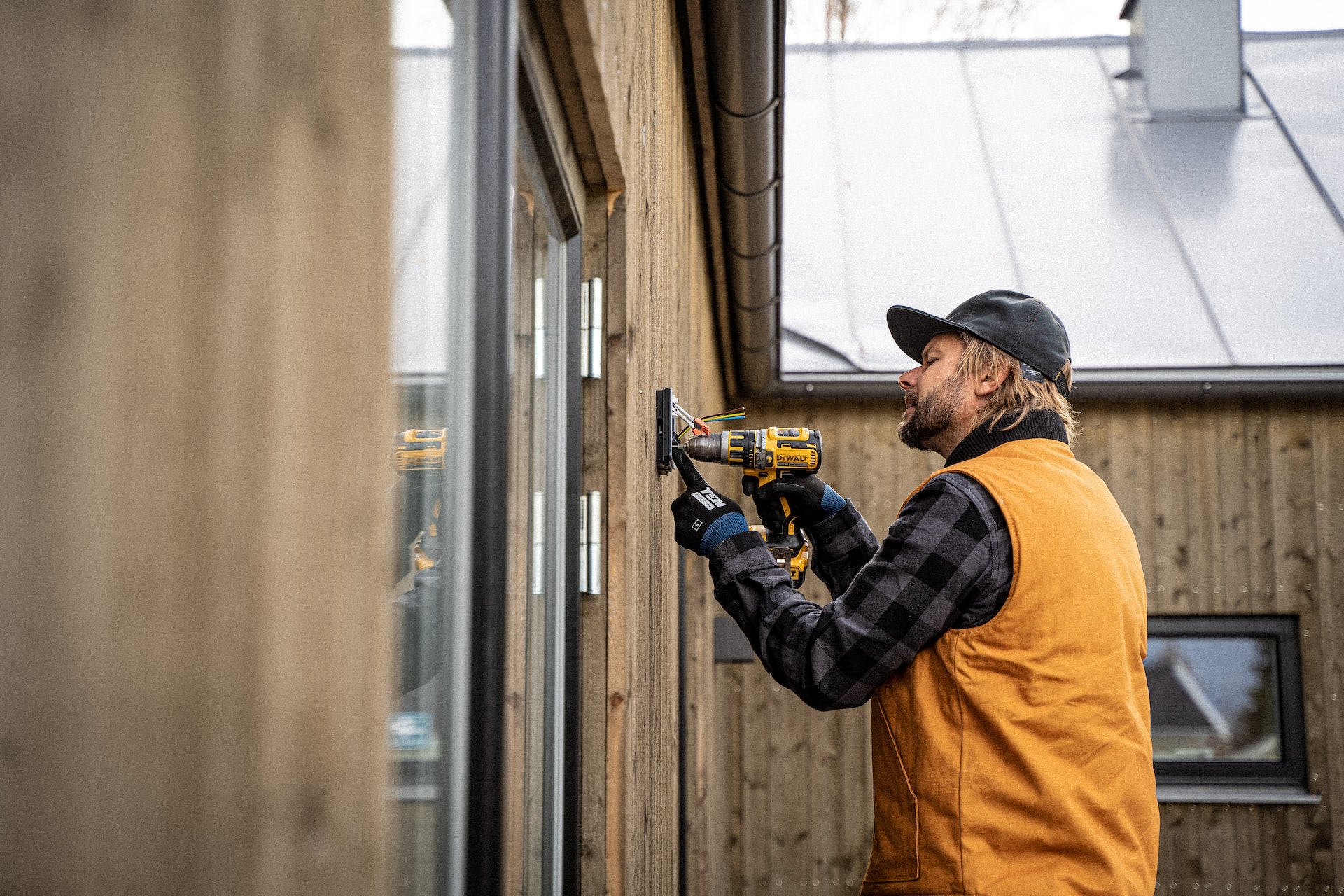
For many small businesses, opening a retail location is a dream come true. It can however be a very stressful experience, with so much to consider and organize.
Customers prefer their shopping experience when the shop is well-designed and maintained. If they are satisfied with their experience, they will be more likely to make purchases, stay for longer and also return. Therefore, getting it right is very important. It is also useful to have a good shop layout and plan in case you ever open other stores, as it will make the process a lot quicker and easier.
Planning your strategy for shop fitting will make your life a lot easier, saving both time and money. Establishing a schedule is really helpful as you can better understand when you want things done and estimate a date of when the shop will be ready to open. Establishing a budget will give you an idea of how much you can spend on certain areas and where you may need to try to save money. A shop fitting expert will be able to advise you on any aspects of the process, or complete the whole job if you want!
1. Plan your space before fitting out your shop
You must first consider the type of shopping experience you want to provide. Think about how you want your customers to view the store and how you can ensure they see the right things. Well-designed areas can encourage customers to see all they need to and even to stay in the shop longer.
When it comes to layout, you must think carefully. Research has found the majority of customers turn right when they first walk into the shop. Therefore it may be useful to strategically place your most enticing offers and displays in these areas.
Functionality is the top priority. Usability is just as, sometimes even more important within retail spaces than aesthetic factors. You must keep in mind the room’s key purposes, and what the customers’ motivations will be when entering the shop.
Lighting is another important aspect to consider when designing your shop. Different tones of lighting can be used to give the store more or less color, and enhance the products on sale. Ambient lighting can be used for a softer look, or spotlights can be used for maximum brightness. Play around with different types to see what best fits your brand and your space.
2. Decide on your budget
Do some research to get a sense of what this would cost and use this information to create a reasonable budget. Decide on what your priorities will be, and allocate more budget to them if needed. This might take a bit of time to research but it will be worth it to ensure you have a clear view of the costs involved. It will also ensure you don’t get overcharged for any products or services.
3. Hire a shop fitting specialist
A shop fitting expert will have the knowledge and experience to understand how your shop can work and look best. They will have a unique view of how it can be designed and will ultimately ensure your shop has the best layout possible. They also will have a large network of contacts within the industry so will be able to use top-quality services and suppliers and they will have good prices negotiated with them. They will also have an understanding of health and safety issues, so they will ensure the shop complies with safety regulations. For example, they will be able to quickly see if there are any potential trip hazards or fire dangers and advise what to do to solve the issue.
You could consider contacting a local carpenter who can help with shelving and other fittings at a more reasonable rate if you are not able to afford a shop fitter. You will also need to hire a skilled electrician for electrical installations. Choosing one that has experience in shop fitting electrical installation would be the best option.
4. Purchase furnishings and fixtures
You will need to buy shelving systems, display stands, islands, or railings to organize your shop. Investing in good quality fixtures may help you out in the long run. You will also want some simple shelving for storing cupboards and back-of-house storage, and a counter for payments. Consider how much stock you want to be on show and how it can be best displayed. For example, a boutique clothing store may want fewer items on the shop floor but nicely displayed, whereas a discount store will have lots of stock tightly packed in. Measure everything accurately, especially when ordering online, to ensure everything will be the right fit.
Purchasing pre-owned equipment can help you save money. If you’re looking for secondhand retail equipment, check out websites like Gumtree, Preloved.co.uk, and eBay.
5. Purchase shop supplies
You will need to purchase a variety of other supplies needed for your shop. You may need a label maker to make price stickers or a tagging gun to attach price tags to your products. You may need additional point-of-sale labeling, signs, shelf labels, and promotional marketing materials. You will need a till, an electric point-of-sale system for processing payments at the point of sale. When it comes to payments, it is good to be able to accept as many different options as possible to ensure you aren’t losing any customers. While a lot use contactless options nowadays, some customers do use cash so you must be able to cater to both.
A safe can also be useful to consider buying, as it can hold your shop’s proceeds safely. Consider purchasing CCTV cameras, particularly in blind spots to discourage shoplifters and provide your store with extra security. A burglary alarm may also be worth buying for when no one is in the shop. Ensure fire alarms and smoke detectors are in the right places and regularly test these.
Other essential services like rubbish collection, water, gas, electricity, internet, and insurance must all be taken into consideration. Again, it might be worth doing some research to find reasonably priced suppliers.
There is a lot you will need to organize and plan, so make sure you allocate yourself enough time to get it done. Spending a bit of extra time doing more research could help you save a lot of money and will ensure you get it done right.
Home Decor
Cleaning in Central London: Is DIY Cleaning Effective or Should You Hire Professionals in London?
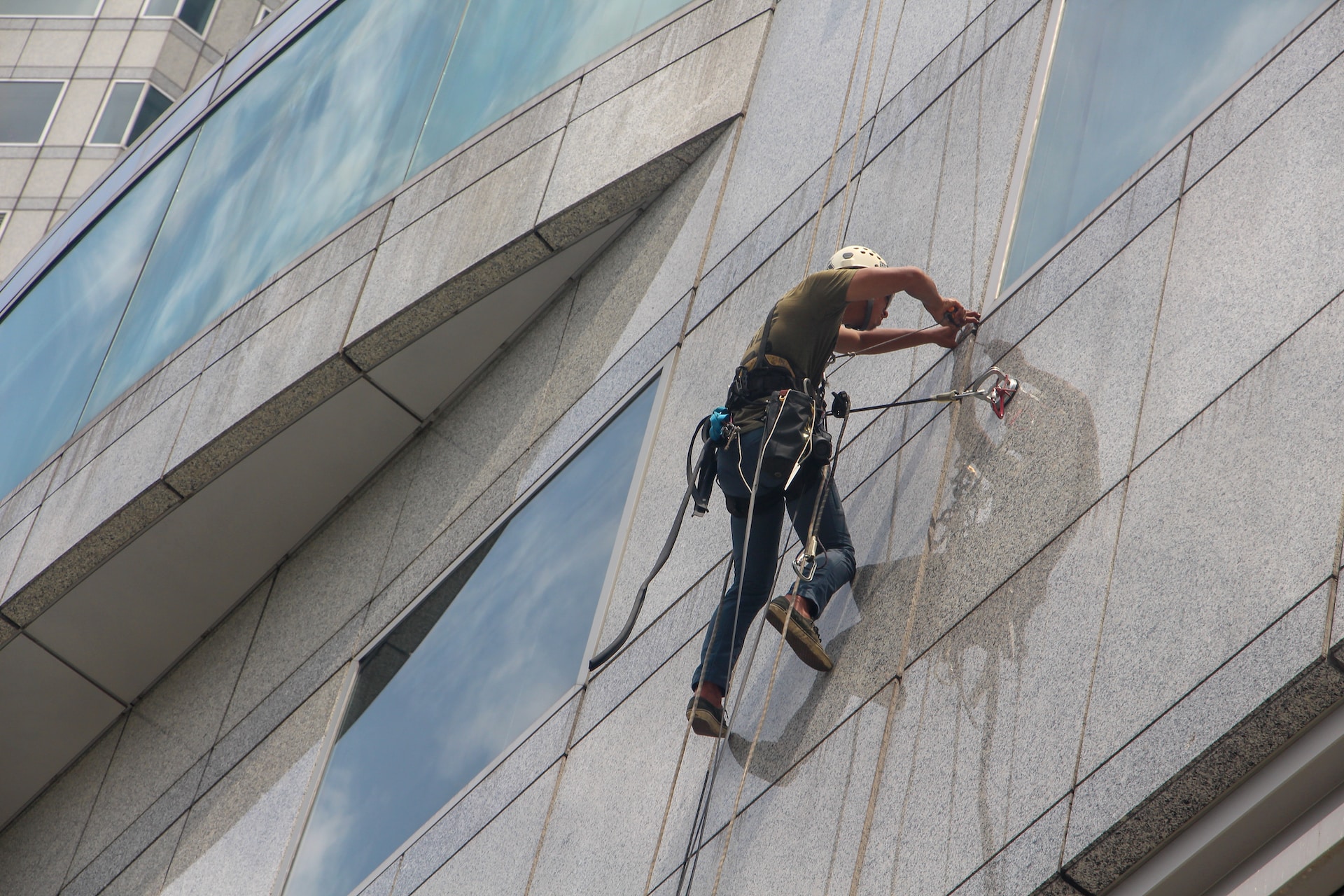
Central London, with its grandeur and historic charm, stands as a testament to time, holding stories of eras gone by within its brick and mortar. Wander its streets, and you’ll pass iconic landmarks, grand townhouses, quaint cafes, bustling markets, and corporate skyscrapers, all humming with life. But, as every resident knows, life in Central London isn’t just about enjoying the sights and sounds. It’s also about maintaining and upkeeping these spaces, ensuring that the charm remains untarnished. This leads to an inevitable question every Central London dweller grapples with: “Should I roll up my sleeves and clean my space myself, or is it wiser to hire a professional?” The hustle and vibrancy of Central London, combined with its unique challenges, makes this decision particularly compelling.
Cleaning By Yourself

Embarking on a DIY cleaning journey is akin to taking a self-guided tour through the myriad streets of Central London. There’s an unparalleled sense of discovery and accomplishment in every corner cleaned and every stain vanquished. DIY cleaning empowers individuals, giving them full control over their environment. You decide on the products, ensuring they’re in line with your values, be it eco-friendliness or a particular scent preference. Additionally, the hands-on approach fosters a deep connection with one’s living space, understanding its every nook and potential challenge. However, it’s also essential to remember that this route demands time, energy, and a fair amount of dedication. Just as navigating Central London’s streets requires a keen sense of direction and occasional patience, DIY cleaning necessitates a commitment to learning and adapting.
Pros of DIY Cleaning in Central London

1. Save Money
One of the primary benefits of DIY cleaning in Central London, or anywhere for that matter, is the potential savings. The cost of hiring professional cleaning services can add up, especially if done regularly. On the other hand, if you decide to clean yourself, you only have the initial outlay for cleaning products. Over time, this can lead to substantial savings. It’s like cooking at home versus eating out; the former is almost always more budget-friendly.
2. Choose Products
Going the DIY route gives you the luxury of choice. Central London has a plethora of shops selling a variety of cleaning products. Have a penchant for lavender-scented floor cleaners? Or perhaps you’re particular about using eco-friendly, biodegradable products? Cleaning yourself means you get to choose exactly what goes into maintaining your space, ensuring it aligns with your personal preferences and ethical choices.
3. On Your Time
The beauty of DIY cleaning lies in its flexibility. Central London life can be unpredictable, with work commitments, social events, and other unforeseen occurrences. Not being tied down to a professional cleaner’s schedule means you can clean at 2 a.m. or 2 p.m., whatever works best for you. It’s about setting your rhythm and sticking to it.
4. Personal Touch
Every home in Central London, whether a modern flat or a historic townhouse, has its quirks. You’re best acquainted with that stubborn corner or the delicate surface that requires a gentler touch. DIY cleaning ensures that your home is cared for with a familiarity and affection that only you can offer. It’s about knowing your space inside out and tending to its unique needs.
5. Immediate Action
There’s a sense of immediacy and responsiveness with DIY cleaning. Picture this: you accidentally knock over a glass of red wine on your white rug. Instead of scheduling a cleaner and watching the stain set, you can take immediate action, armed with your arsenal of cleaning supplies. Quick response times often mean lesser damage and more effective cleaning. After all, in the lively backdrop of Central London, who wants to wait?
6. Stay Fit
Picture the bustling streets of Central London. Now, imagine the energy of the city channeled into a cleaning spree in your home. Scrubbing, vacuuming, and even the simple act of dusting can elevate your heart rate and get those muscles working. For those who skip the gym, a thorough cleaning session can be an unexpected way to burn calories. In a way, every push of the mop and every sweep of the broom becomes a mini-exercise, making your home shine while giving you an invigorating workout. here are some expert cleaning tips that you need to know.
7. Safety
Living in the heart of Central London, amidst its vast urban sprawl, one often yearns for personal safety and peace of mind. When you handle your cleaning, you’re in total control of what products are used. No need to worry about strong chemicals or substances that could harm pets or family members. It’s about ensuring your haven remains uncontaminated and safe, preserving the sanctity of your personal space.
8. Learning
Just like Central London constantly evolves and adapts, so does your cleaning prowess with time. Every stain faced and every challenge overcome becomes a lesson. Maybe you’ll discover that baking soda works wonders in a greasy oven or that lemon is the answer to limescale. As time progresses, your cleaning toolkit of tricks will expand, making each subsequent clean quicker and more effective. It’s a journey of discovery, right in the comfort of your home.
9. Control
Central London, with its ever-present hum of activity, can sometimes feel overwhelming. In such an environment, the sanctuary of one’s home becomes even more vital. By undertaking your cleaning, you ensure that the only people within your sanctuary are those you trust. There’s a comfort in knowing that your personal space remains undisturbed, your belongings untouched by unfamiliar hands. It’s all about maintaining a personal, controlled environment amidst the city’s buzz.
10. Satisfaction
Just like the pride one feels in calling Central London home, there’s a profound sense of accomplishment in looking around a freshly cleaned space and knowing it’s all your handiwork. Each gleaming surface and each spotless corner stands as a testament to your effort. The satisfaction derived from a job well done, from seeing your home at its best, is unparalleled. It’s a feeling of accomplishment, akin to conquering a piece of Central London, one clean room at a time.
Cons of DIY Cleaning in Central London

1. Time-Consuming
Living in Central London, with its kaleidoscope of activities and events, there’s always something to engage with. Yet, DIY cleaning often demands hours of dedicated effort. From scrubbing the bathroom tiles to ensuring the kitchen shines, it can be a day-long affair, often stretching into your precious weekends. This commitment can mean missing out on a sunny afternoon in Hyde Park or a visit to the latest pop-up cafe.
2. Missed Spots
Even the most meticulous among us might overlook certain areas. Professionals, with their trained eyes, are adept at identifying and addressing dirt in sneaky spots – like the underside of a shelf or the gap behind a radiator. In the vast landscape of a Central London home, some spots might just elude the untrained eye.
3. Lack of Expertise
No matter how dedicated, certain stains can stump the best of us. Be it a wine stain on a cherished rug or stubborn grime on the oven, without the know-how, these can turn into persistent issues. Professionals often come armed with techniques honed over the years, something a DIY approach might lack.
4. No Heavy Equipment
A typical Central London flat might have a vacuum and some basic cleaning tools. But professionals bring in heavy-duty equipment – steam cleaners, high-power vacuums, and more. Such equipment can tackle deep-seated dirt and provide a level of cleanliness that’s tough to achieve with standard tools.
5. Can Be Tiring
After a long week navigating Central London’s hustle and bustle, cleaning can feel like running a marathon. The physical effort, combined with the mental concentration, can be exhausting, leaving you spent and devoid of energy for other pursuits.
6. Resource Heavy
An amateur cleaner might end up using more water for mopping or keeping the vacuum running longer than necessary. This can inadvertently lead to a higher utility bill, not to mention the environmental implications. Efficient use of resources is both eco-friendly and wallet-friendly.
7. Not Always Efficient
While there’s a charm in the DIY approach, it might not always be the quickest route. Professionals, with their systematic methods, can often achieve more in less time. What might take you a full day could be a matter of hours for a seasoned cleaner.
8. Risk of Damage
Central London homes, with their blend of modern aesthetics and vintage charm, require care. Using the wrong cleaning agent on a wooden surface or scrubbing a delicate fabric can cause irreversible damage. Without expert knowledge, such mishaps are potential pitfalls.
9. Storage
Cleaning supplies, in all their variety, demand space. Central London homes, often pressed for space, can feel cluttered with bottles, mops, buckets, and more. Storing these efficiently becomes another task in itself.
10. Can Get Repetitive
The romance of cleaning, if any, can wear thin over time. Doing the same tasks week in, and week out, can feel mundane and monotonous. In a city that offers new experiences at every corner, cleaning can start feeling like a repetitive chore, devoid of novelty.
Hire Cleaning Professionals in Central London
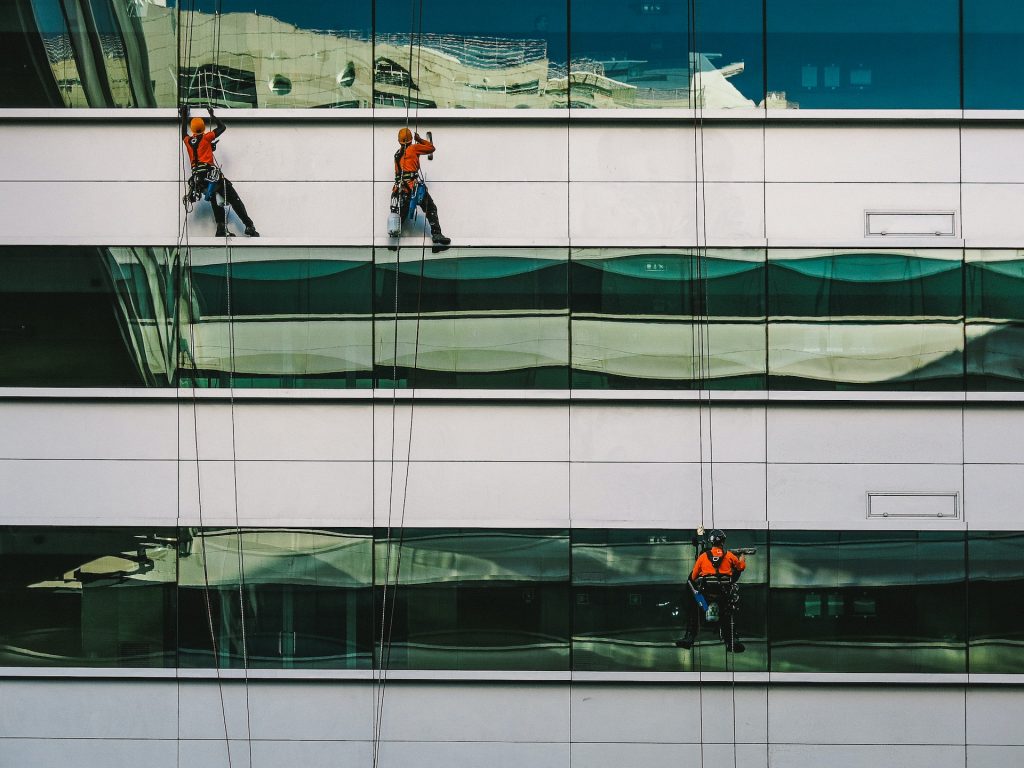
Engaging the services of cleaning professionals in Central London is like hiring an expert tour guide for a historic landmark. You’re assured of depth, precision, and a wealth of experience. Professionals come armed with the latest tools and techniques, ensuring that every inch of your living space gets the meticulous attention it deserves. They offer the luxury of time – while they work their magic, you’re free to pursue other passions or simply relax. Moreover, Central London’s cosmopolitan nature means access to a variety of cleaning services tailored to specific needs, from eco-friendly solutions to specialized deep cleans. Yet, this convenience comes at a price and relinquishes some personal control. Just as an expert tour might skip a spot you find fascinating, professional cleaners might not always align with every minute preference.
Pros of Hiring a Cleaning Professional In Central London

1. Expert Clean
Navigating the complexities of a thorough cleaning requires a level of expertise that professionals have honed over many years. Just as the architectural wonders of Central London are best appreciated by those knowledgeable in history, the intricacies of cleaning are best addressed by experts. Professionals are trained to identify and tackle stubborn stains, know the best techniques for various surfaces, and navigate the trickiest of spots with ease. It’s like having an artisanal craftsman at work, ensuring every nook and cranny of your Central London home gleams with perfection.
2. Time-Saving
Central London pulsates with a rhythm of its own, offering a plethora of experiences, from theatre visits to riverside strolls. Hiring professionals ensures that your time isn’t consumed by the arduous task of cleaning. Instead of spending hours scrubbing and polishing, you can immerse yourself in the delights of the city, or simply enjoy a quiet afternoon with a book. In essence, you’re trading cleaning hours for leisure moments, making the most of what Central London has to offer.
3. Better Tools
Much like a seasoned chef arriving with a set of gourmet tools, professional cleaners come equipped with top-of-the-line equipment. This isn’t just your everyday vacuum or mop; these are specialized tools designed to achieve a deep clean, tackling dirt and grime that might remain elusive to conventional cleaning methods. Whether it’s a high-powered steam cleaner that rejuvenates your carpets or a state-of-the-art scrubber that makes your floors shine, these tools elevate the cleaning quality, ensuring your Central London home gets the royal treatment it deserves.
4. Stress-Free
The daily hustle of Central London, as exhilarating as it is, can also be taxing. Amidst the bustle, the idea of coming home to a cleaning task can feel daunting. Entrusting this responsibility to professionals takes a weight off your shoulders. There’s an immense comfort in knowing that your home will be spotless without you moving a muscle. Imagine enjoying a serene sunset over the Thames, knowing that by the time you return, your living space will be in impeccable order. It’s a luxury, a break from chores, allowing you to truly relax.
5. Consistent Results
There’s a rhythm and reliability with professionals that’s hard to replicate in DIY efforts. Just as you can expect consistent service at your favorite Central London bistro, professional cleaners ensure the same level of pristine cleanliness every single time. No fluctuations, no missed spots—just a predictable, high-quality clean that gives you peace of mind. It’s about knowing that regardless of the challenges your space presents, the outcome will always be consistently stellar.
6. Tailored Packages
Navigating Central London’s diverse residences requires a flexible approach. Many professional cleaning services have recognized this and offer bespoke packages that are moulded to individual needs. Whether it’s a loft requiring special attention or a townhouse with specific cleaning demands, these tailored services ensure that every home gets the exact care it necessitates, reflecting its unique character.
7. Insured Services
In the rare instance where an unexpected mishap occurs, many professional cleaners come with the assurance of insured services. This means that if something is accidentally damaged or broken, the liability is on them. It’s an added layer of security, ensuring that your precious belongings in Central London are always safeguarded.
8. Deep Clean
Professionals don’t just clean; they delve deep. From the unseen dust beneath the furniture to the overlooked grime in window tracks, they ensure every part of your Central London dwelling shines. Their trained eyes and expert methods guarantee that even the most hidden spaces receive thorough attention, rejuvenating your entire living space.
9. Eco-friendly Options
With a growing consciousness of the environment, many cleaning professionals in Central London have adopted green cleaning methodologies. They harness eco-friendly products that are not only gentle on your home surfaces but also kind to the planet. It’s a harmonious blend of meticulous cleaning without compromising on environmental values.
10. Regular Scheduling
The rhythm of life in Central London can be demanding. Professional cleaners simplify this by offering regular scheduling options. Whether it’s a weekly spruce-up or a monthly deep clean, you can set a routine that suits you. Once scheduled, it’s a hands-off approach, allowing you to immerse yourself in city life, confident that your cleaning needs are systematically addressed.
Cons of Hire Cleaning Professionals
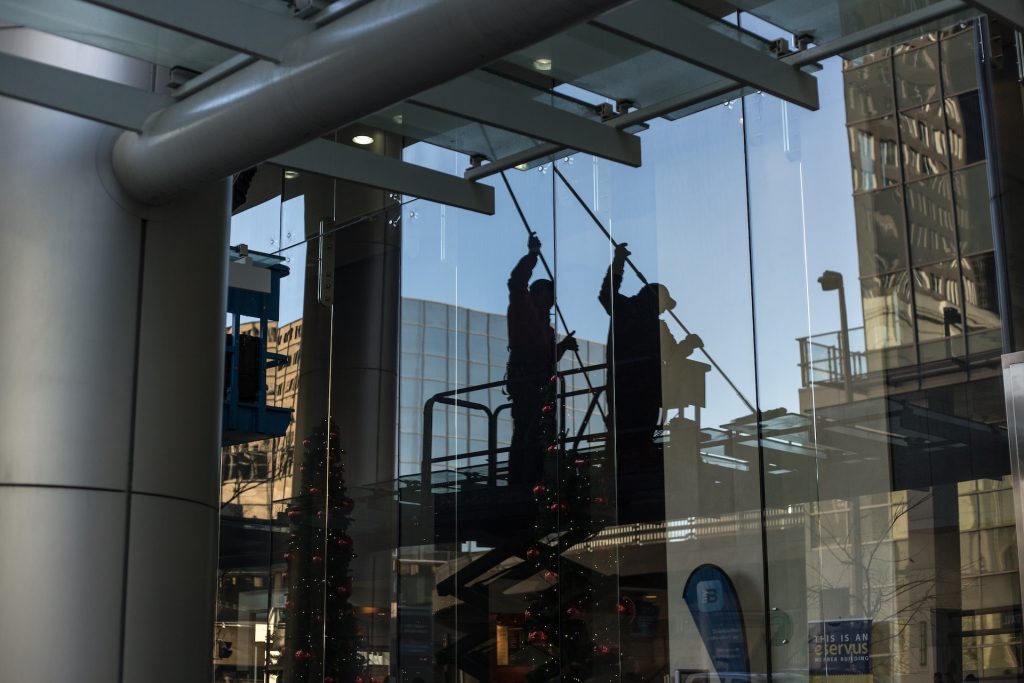
1. Costlier
Central London, with its upscale lifestyle, often comes with hefty price tags, and professional cleaning is no exception. While you do get top-notch service, this expertise comes at a premium. Over time, these costs can accumulate, potentially straining the household budget, especially when compared to DIY cleaning.
2. Strangers in Home
For many Central London residents, their homes are intimate sanctuaries. Having unfamiliar faces navigate these personal spaces can be disconcerting. Despite professionals’ best intentions, the mere presence of someone unknown can make some individuals uneasy, detracting from the comfort of their own homes.
3. Rely on Availability
Professionals, especially the highly sought-after ones in Central London, have tight schedules. This means you might have to adjust your plans according to their availability. If you’re someone who values spontaneity or has unpredictable hours, this can be a challenge.
4. Possible Overbooking
With the bustling pace of Central London, it’s not uncommon for popular services to be in high demand. This can sometimes lead to overbookings. You might be geared up for a cleaning session, only to find out your slot has been double-booked or rescheduled.
5. Communication Barriers
Every Central London home has its quirks and specifics. Conveying these unique requirements, especially if the cleaning crew is frequently changing or if there’s a language barrier, can be tricky. Misunderstandings can lead to areas being overlooked or cleaned in a manner you didn’t prefer.
6. Wait Times
Life in Central London is dynamic. Spills and messes can happen spontaneously, but professional cleaners can’t always be summoned at the drop of a hat. You might find yourself waiting for their next available slot, making immediate cleaning needs a bit cumbersome.
7. Trust Issues
Handing over the keys to your Central London abode is a significant act of trust. With frequent news about breaches of privacy, some individuals find this step daunting. The idea of granting access to one’s personal space, especially during work hours when no one is home, can be a source of anxiety.
8. Potential for Breakages
Professionals, though skilled, are still human. Accidents, like knocking over a cherished vase or a misstep causing a small dent, can happen. While insurance might cover damages, certain sentimental items are irreplaceable, leading to distress.
9. Less Personalised
Professional cleaners in Central London are trained for efficiency. Their aim is to get the job done proficiently in the allocated time. While this ensures a clean home, it might not always account for the little personal preferences one might have, making the process seem somewhat mechanical.
10. Can Become Dependent
Relying regularly on professionals can create a sense of dependency. Over time, one might find themselves at a loss when faced with basic cleaning tasks or simple stain removals. It’s like always eating out at Central London’s finest and then forgetting the basics of cooking at home.
Conclusion
In the end, the choice between DIY and professional cleaning in Central London boils down to personal preferences, lifestyle, and priorities. It’s about striking a balance between convenience and cost, between personal involvement and expert intervention. Whichever route you choose, the ultimate aim remains the same: a clean, comfortable, and inviting space to call home in the heart of one of the world’s most captivating cities
-

 Business3 years ago
Business3 years agoThe Most Efficient Ways To Use The Best 6 Business Keynote Presentations
-

 Apps and Software7 months ago
Apps and Software7 months agoStarbucks Partner Hours App Login Guide
-

 Entertainment7 months ago
Entertainment7 months ago15 Best IPTV Service Providers in the UK 2025
-

 Tech3 years ago
Tech3 years agoIs Forecasting A Part Of Data Science?
-

 Economy3 years ago
Economy3 years agoWhat does it mean to Dream About Pennies?
-

 Entertainment7 months ago
Entertainment7 months ago10 Best Free Video Player Apps For Apple TV
-

 Entertainment2 years ago
Entertainment2 years agoHow To Enhance Your Viewing with Video Subtitle Support
-

 Travel2 years ago
Travel2 years agoBenefits of UK Skilled Worker Visa for International Professionals





























